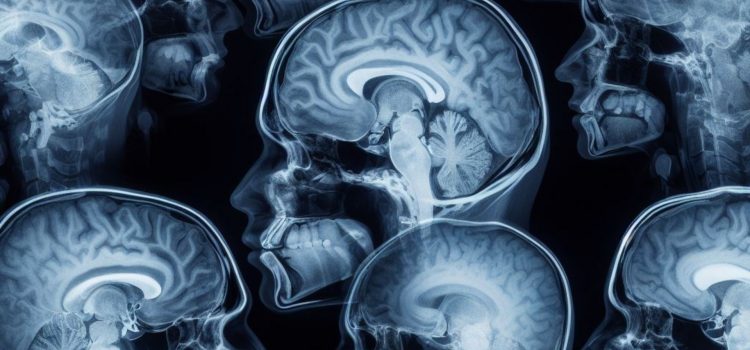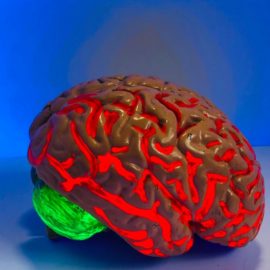
What’s SPECT imaging? How does it aid in brain dysfunction diagnosis and subsequent treatment plans?
Psychiatrist and brain health expert Daniel G. Amen’s approach is informed by SPECT (single photon emission computed tomography) scans—a type of brain imaging that shows a brain’s blood flow and electrical activity. According to Dr. Amen, SPECT imaging revealed the flaws of traditional treatment.
Read more to learn about SPECT scans and how they’re a useful tool for brain health.
Dr. Amen’s SPECT Imaging Approach
According to Dr. Amen, SPECT imaging aids in identifying a wide range of indicators of poor brain health, including physical trauma, toxin exposure, infections, inadequate neural stimulation, and unbalanced neurotransmitters (chemical messengers that regulate mood and cognition). He noticed that certain brain patterns seemed to be associated with particular health conditions.
(Shortform note: SPECT scans function through a three-step process: 1) A practitioner introduces a radioactive isotope (a tracer) into a patient’s bloodstream. This isotope emits gamma rays (tiny bursts of energy) while circulating throughout the body. 2) The practitioner then positions a gamma camera above the patient, which is designed to pick up the gamma rays that the isotope releases. 3) As the gamma camera detects these rays, a computer processes the data to pinpoint where the isotope was when it emitted the radiation. This creates detailed images that show areas of both reduced and increased blood flow within the patient’s body.)
Amen realized that many people’s physical, mental, and cognitive issues arise from physical damage to specific regions of the brain and their associated functions. However, traditional medical approaches don’t take this into account: Practitioners typically observe and make diagnoses based on the external expression, or symptoms, of these underlying physical damages. As a result, patients’ issues may be misdiagnosed and they may receive inadequate treatments.
For example, a patient may report symptoms of fatigue and persistent sadness and receive a diagnosis and treatment plan for depression. While this treatment plan might alleviate her symptoms temporarily, the underlying biological condition, a brain injury causing altered mood and energy levels, remains undiagnosed and untreated. Amen asserts that the most effective way to provide long-term relief for many health issues is to treat them at the root by repairing physical damage to your brain and enhancing its overall health.
| Balancing SPECT Scans and Symptom Diagnoses in Mental Health Amen argues that relying solely on patients’ reported symptoms often leads to misdiagnoses. However, other experts note that SPECT scans, while valuable for neuroscientific research and patient diagnoses, have three limitations that can lead to diagnostic inaccuracies. 1) The radioactive tracer used in SPECT scans follows the bloodstream, capturing brain activity at a particular moment. This means that any temporary fluctuations, such as changes in heart rate or stress levels during the scan, could lead to images that don’t accurately reflect the patient’s typical brain function. Such images can misrepresent the underlying condition, potentially leading clinicians to diagnose and treat a state that isn’t representative of the patient’s normal baseline. 2) SPECT scans can detect areas of high or low brain activity but may not always distinguish between healthy variability and genuine abnormalities in brain function. The broad spectrum of “normal” brain activity means that anomalies in one individual might be within normal ranges for another. Such subtleties demand the interpretative skills of experienced clinicians to avoid misdiagnoses and inappropriate treatments. 3) While research backs up Amen’s assertion that many mental health issues stem from physical changes in the brain, this research also indicates that a full recovery strategy must address the psychological components of brain health. These components, including the patient’s emotional and cognitive experiences, often elude detection by SPECT scans. On the other hand, symptom diagnosis captures the patient’s psychological experience and adds essential context to the objective data from SPECT scans. Therefore, clinicians can provide more effective treatment plans by combining data from SPECT scans with patient-reported symptoms. |
While Amen advocates using SPECT scans to diagnose the biological underpinnings of mental health conditions, he emphasizes that effective treatment plans require a holistic approach that addresses biological, psychological, social, and spiritual factors. He explains that these four factors interdependently influence your overall health—and, by extension, your brain health and function. For example, lack of sleep (biological) can alter your brain chemistry and cause anxiety (psychological), leading to social withdrawal (social) and a diminished sense of purpose (spiritual).
Amen suggests that, even without a SPECT scan and targeted treatment for your brain’s particular issues, you can still substantially improve your brain health by nurturing these four factors.






